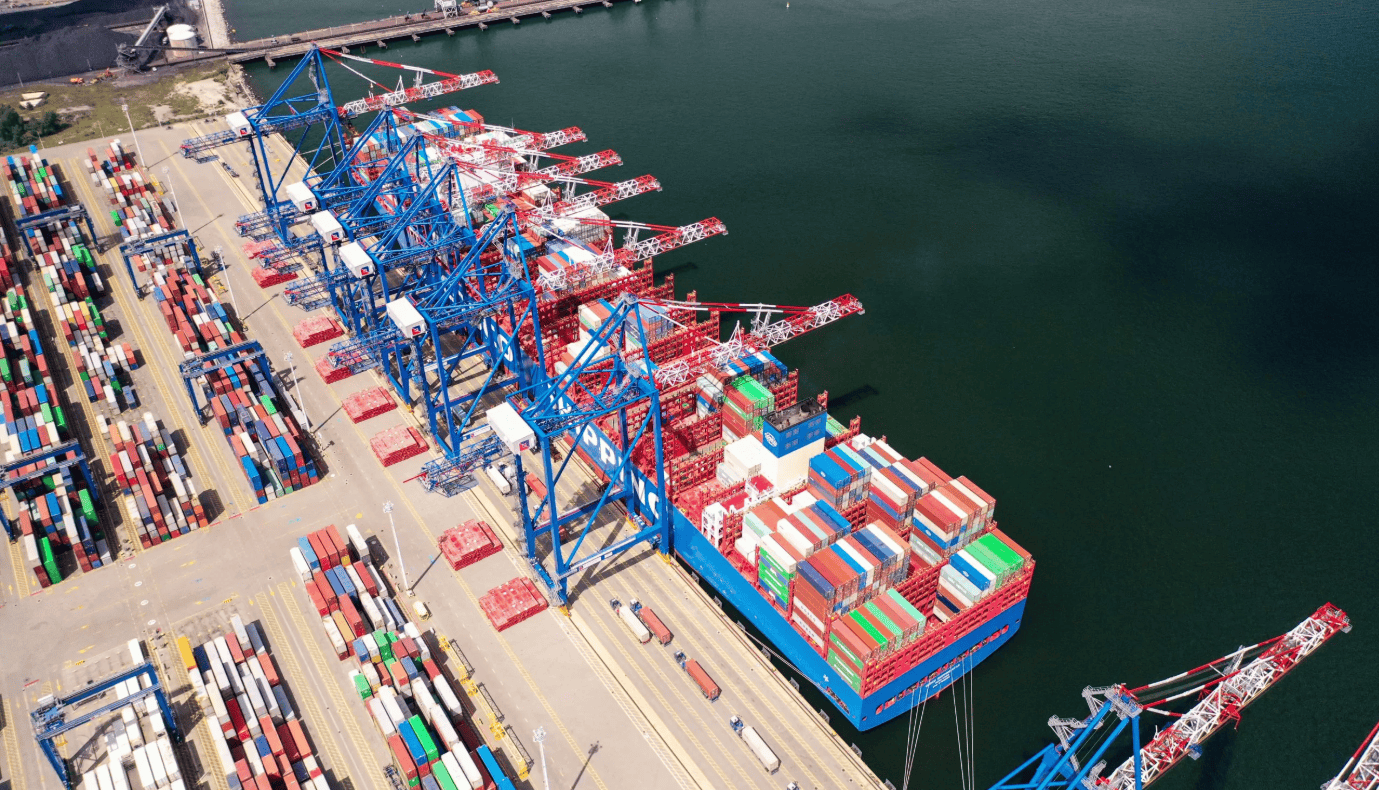Total cargo throughput at Baltic seaports reached 460.4 million tonnes in the first half of 2025, representing a modest 0.5% increase in volume. The result reflected divergent trends, both across individual countries in the region and in relation to specific cargo groups and handling technologies.
Starting with the largest market—Russian ports—throughput fell by 3.2% to 135.8 million tonnes. The main driver of this decline was reduced crude oil exports, which cut volumes by 6.2%.
Swedish ports, the second-largest Baltic market by total throughput, also recorded a weaker performance. Volumes decreased by 0.9% to 84.5 million tonnes. This was mainly due to lower handling of liquid bulk cargo (-6.0%), ro-ro traffic (-2.4%), and containers (-0.4%). Together, these categories account for 68% of total volumes, with liquid cargo (27.2 million tonnes) and ro-ro (22.6 million tonnes) being the most significant. Other general cargo also fell (-2.5%). A partial offset came from dry bulk cargo, which grew by 13.3% to 16.1 million tonnes.
Poland ranked third in the region with a total of 69.0 million tonnes handled. Unlike Russia and Sweden, Poland’s port market grew by 1.5%. The main drivers were general cargo (+2.6 million tonnes, +9.6%) and other bulk cargo (+0.9 million tonnes, +23.4%). Container throughput was particularly strong, rising by 20.7%. On the other hand, grain (-2.0 million tonnes), coal (-0.4 million tonnes), and liquid fuels (-0.4 million tonnes) all recorded declines.
The strongest positive shift came from Finland, where ports increased volumes by 4.5 million tonnes to 50.6 million tonnes (+10.0%). Growth was driven by higher crude oil (+1.8 million tonnes) and fertilizer (+1.1 million tonnes) throughput, along with positive trends in sawn timber, paper, and wood pulp. Interestingly, raw timber, coal, and grain volumes declined.
Denmark followed with 41.0 million tonnes handled, a 0.8% decrease overall. Within individual cargo groups, there were both gains and losses. Containerized cargo (+18.6%), grain and feed (+9.0%), and ores and scrap (+8.8%) all contributed positively, while liquid bulk (-3.9%) and other bulk (-1.7%) declined. Ro-ro traffic also decreased, down 2.3% to 10.4 million tonnes.
Throughput also grew in Germany and Lithuania. German Baltic ports handled 29.0 million tonnes in the first half of 2025, a 5.4% increase year-on-year. Lithuanian ports, with a total of 23.7 million tonnes, posted an impressive 12.9% rise. This was mainly due to general cargo, which grew by 1.9 million tonnes, especially container traffic (+1.4 million tonnes). Bulk cargo volumes also increased, both liquid (including gas) and dry (aggregates, building materials, fertilizers).
The picture was different in Latvia and Estonia. Latvian ports saw a 3.5% decline, handling 17.3 million tonnes. Liquid bulk increased (+44.4%; +0.9 million tonnes), but dry bulk (-15.3%; -1.4 million tonnes) and general cargo (-3.6%; -0.2 million tonnes) both fell. Estonia recorded an even sharper decline: throughput dropped 13.2%, leaving volumes at 9.4 million tonnes.
In summary, the Baltic port market in the past half-year showed a very mixed picture, as positive and negative trends overlapped across both geography and cargo structure. The good news, however, is that the overall positive result for the first half of 2025 was largely driven by EU ports, which had been losing volumes in recent years.
dr hab. Maciej Matczak, Professor of the Maritime University of Gdynia



